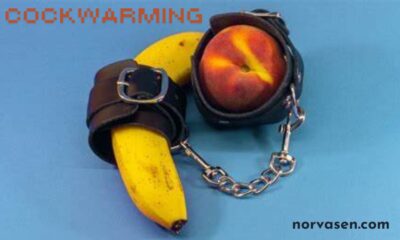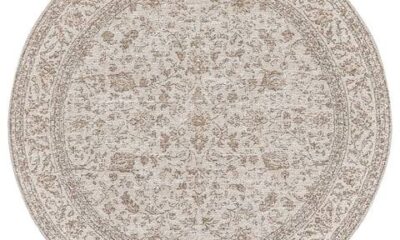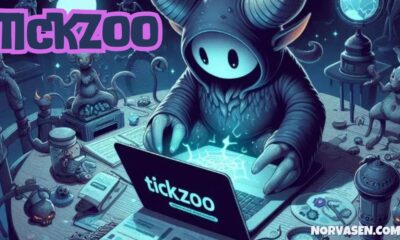Blog
The Benefits of Montessori Toys for Child Development

Child development is a crucial phase that shapes a person’s cognitive, emotional, and social abilities. The learning tools and toys used during early childhood play a significant role in fostering creativity, problem-solving skills, and independence. Among the many educational resources available, Montessori toys have gained widespread popularity due to their unique approach to learning.
Designed to encourage hands-on exploration and independent thinking, these toys align with the Montessori philosophy, which emphasizes self-directed activities and sensory engagement. In this article, we’ll explore what makes Montessori toys special, their key benefits, and why they are an excellent choice for early childhood education.
What Are Montessori Toys?
Montessori toys are specially designed educational materials that follow the principles of the Montessori method, an approach to learning developed by Dr. Maria Montessori in the early 20th century. These toys prioritize simplicity, natural materials, and purposeful play to help children develop essential life skills.
Unlike conventional toys that often rely on flashing lights and sounds, Montessori toys focus on tactile experiences, problem-solving, and cognitive engagement. They encourage children to explore, experiment, and learn at their own pace, fostering a deeper understanding of concepts.
The Key Benefits of Montessori Toys
1. Encouraging Independence and Self-Learning
One of the core principles of Montessori education is promoting independence. Montessori toys are designed to help children work through challenges on their own, enhancing their confidence and problem-solving abilities.
For instance, stacking blocks, sorting puzzles, and threading beads allow children to figure out solutions without direct adult intervention. This self-guided learning fosters patience, resilience, and a sense of accomplishment.
2. Enhancing Fine Motor Skills and Coordination
During early childhood, developing fine motor skills is essential for everyday activities like writing, buttoning clothes, and using utensils. Many Montessori toys are crafted to refine hand-eye coordination and muscle control.
Activities such as fitting wooden shapes into corresponding slots, using tweezers to pick up small objects, and tracing letters with their fingers all contribute to improved dexterity. These simple yet effective exercises lay the foundation for future academic and practical skills.
3. Promoting Sensory Exploration and Cognitive Development
Montessori learning places great emphasis on sensory experiences. Many Montessori toys engage a child’s senses through different textures, colors, and weights, helping them understand the world through touch and observation.
For example, wooden blocks, textured fabric squares, and sound cylinders encourage children to explore their environment actively. This kind of play helps improve memory retention, logical thinking, and problem-solving abilities.
4. Fostering Creativity and Imaginative Play
Open-ended toys inspire children to think creatively and explore different possibilities. Unlike traditional toys that dictate how they should be used, Montessori toys allow for flexibility and imagination.
A simple set of wooden figures can transform into a family, an army, or even imaginary creatures, depending on the child’s storytelling ability. This free-form play encourages children to use their creativity, which is essential for cognitive and emotional development.
5. Building Focus and Concentration
Many modern toys and digital devices overwhelm children with excessive stimuli, making it difficult for them to focus on one task for an extended period. Montessori toys, on the other hand, are intentionally simple, allowing children to concentrate on a single activity without distractions.
For example, puzzles, stacking rings, and bead threading activities require children to pay attention and complete tasks methodically. Over time, this helps develop their ability to focus and sustain attention on complex problems, a skill that is beneficial in both academic and everyday settings.
6. Encouraging Real-Life Skills and Practical Knowledge
Montessori education emphasizes real-life skills, and Montessori toys are often designed to mimic real-world activities. Toys that involve pouring, scooping, lacing, and sorting introduce children to practical life exercises.
These activities not only prepare children for daily tasks but also instill a sense of responsibility and competence. Learning how to fold clothes, tie shoelaces, or measure ingredients while playing builds confidence and prepares children for independence in their daily lives.
Why Choose Montessori Toys?
Investing in Montessori toys is a great way to ensure that your child engages in meaningful play that fosters growth and development. Unlike mass-produced plastic toys, Montessori-inspired materials are often made from natural, sustainable resources like wood and fabric, making them safer and more environmentally friendly.
Additionally, these toys grow with your child. Many Montessori toys are designed to be adaptable, allowing kids to explore different ways to use them as they develop new skills. This longevity ensures that children remain engaged and continue learning without quickly losing interest.
Conclusion
In a world filled with flashy, short-lived distractions, Montessori toys stand out as an excellent choice for fostering meaningful learning experiences. They encourage independence, creativity, problem-solving, and sensory exploration—all essential skills for a child’s early development.If you want to provide your child with toys that promote cognitive and motor skill growth while ensuring a fun and engaging experience, consider exploring a selection of high-quality Montessori toys today. Investing in these educational tools can have a lasting impact on your child’s learning journey and overall development.
Blog
The Unspoken Rules of Dressing Well in London’s Smartest Postcodes

It’s Not Written Down, But Everyone Knows
Spend enough time in places like Mayfair, Belgravia, Chelsea, and you start to notice there’s a sort of silent agreement about how people dress. Nobody hands you a rulebook, but the cues are everywhere — in the cut of a jacket, the polish on a shoe, even in the colours people avoid.
It’s not about money flashing or designer labels screaming from ten feet away. If anything, that’s the fast way to look like you don’t belong. In London’s smartest postcodes, dressing well is about ease. You could walk into Claridge’s for tea, then stroll to an art opening in Fitzrovia without changing a thing.
Reading the Room Before You Even Step In
The first unspoken rule: dress for the room you’re about to enter.
If you’re headed somewhere like Scott’s or The Connaught Bar, you don’t want to be fussing with your cuffs at the table because your shirt’s pulling. Same goes for a gallery opening in St. James’s — you’re there to enjoy the art, not think about whether you wore the right shoes.
It’s less about following fashion and more about being aware. Some nights that means a blazer over dark trousers, other nights it’s a cashmere sweater and pressed chinos. For women, maybe it’s a silk slip with a long coat, maybe tailored trousers and a clean blouse. If it’s an especially high-end venue, the Tape London dress code would be your best guide for elegant nights: smart, elegant, heels, smart trousers. It covers everything you’ll need for a night out. The point is you look like you’ve done this before, even if you haven’t.
Fabric Does the Talking
People might not comment on it, but they’ll notice the difference between high-street wool and something that actually holds its shape. In these parts of London, texture and weight matter as much as colour.
Cashmere, merino, silk blends, proper cotton — clothes that don’t fight your body but move with it. If you’re wearing denim, make it dark and keep it clean. Footwear’s the same: polished leather or suede in good condition. It’s the quiet signals that say more than a logo ever could.
Colours That Don’t Shout
Another rule nobody tells you outright: keep it calm. In Chelsea or Knightsbridge, you’ll see plenty of navy, camel, charcoal, off-white. Black too, but rarely head-to-toe unless it’s evening.
If you want colour, do it with restraint. A pocket square, a scarf, maybe a subtle pattern on a tie. Loud prints and neon tones don’t really land here unless you’re at an arts crowd event — and even then, they’re usually balanced with something more grounded.
Fit Is Everything
Price doesn’t decide if something works — fit does. A jacket could cost two hundred or two thousand — if the fit’s off, it’s not worth wearing. Tailoring goes beyond suits; a coat or trousers can be adjusted so they sit just right. The goal is to look comfortable in it, not like you’ve been wrestling with it all evening. If you’re constantly straightening it, it’s the wrong piece. The best outfits in these postcodes move with you — down the street, into the club, up to the bar — no second thought.
Day Looks That Work at Night
The people who get it right can go from a late lunch at 5 Hertford Street to drinks at Annabel’s without a complete change. That’s partly about sticking to pieces that can flex either way: blazers that dress down, shoes that hold up in the evening, dresses that work with or without a coat.
It’s the opposite of “outfit for one thing only.” You could be heading to a private dinner, or a quiet drink that turns into a night out. You’re ready for either.
Accessories That Know Their Place
Watches get noticed here — not because they’re huge and diamond-studded, but because they’re right. Keep the watch understated — slim enough to disappear under a cuff, maybe on a leather strap. Same rule for jewellery: simple, intentional, and never piled on like a market display.
Bags matter more than most people think. You don’t want to lug around a tote that collapses in on itself. Structured, good leather, simple hardware — it doesn’t have to be brand new, just well-kept.
Weather Is No Excuse
It’s London. It rains. It’s cold. None of that changes the rules. People here know how to work with the weather without letting it take over the look. A tailored overcoat in navy or camel, a trench that actually fits, suede or leather that’s been treated.
Umbrellas are another tell — in Mayfair, you’ll see solid wood handles and canopies that don’t turn inside out at the first gust. Even in bad weather, the look stays intact.
When to Bend the Rules
Not every postcode moment needs the full dress code. If you’re headed to a Sunday lunch in Notting Hill or a gallery show in Shoreditch before a dinner back west, you can take it down a notch. But there’s a difference between relaxed and careless.
Premium denim with a soft knit, loafers without socks in summer, a scarf that looks like you’ve had it for years — these all work. Just keep the shape, keep the polish.
Knowing When to Leave Something Out
One of the biggest mistakes people make is overdoing it — too many accessories, too many visible logos, too much scent. The smart move is restraint. Pick one thing to stand out: a coat, a shoe, a watch. The rest just needs to hold the line.
It’s the same idea as a well-set table: you notice what’s there because it’s not fighting for attention.
Blending In Without Disappearing
The aim isn’t to be invisible. It’s to look like you’re exactly where you’re supposed to be. You can still have style, you can still be memorable — just in a way that doesn’t feel like you’re trying to steal the room.
In the smartest postcodes, the best-dressed person in the room is usually the one who looks like they got ready without a second thought. That’s the level of ease worth aiming for.
Why It Matters
Some will say none of this matters and you should just wear whatever you like. And, technically, you can. But in certain parts of London, how you present yourself changes how you’re received. It opens doors, literally and socially.
Looking right for the setting shows respect — for the place, for the people in it, and for yourself. It’s not about the price tag or chasing the latest drop. It’s about reading the room without a word being said.
You May Also Read: Rediscovering erothtos: The Ancient Greek Secret to Modern Ethical Dialogue
Blog
Prosecchini: Italy’s Bite-Sized Secret to Prosciutto Bliss

Ever wonder what happens to those perfectly delicious, slightly irregular ends of a prized prosciutto di Parma? They don’t go to waste! Instead, they’re transformed into prosecchini – irresistibly savory, bite-sized pieces of cured ham heaven. Think of them as prosciutto’s fun-sized, flavor-packed cousins, ready to elevate your snacking and cooking instantly.
What Exactly Are Prosecchini?
Let’s break it down simply. Prosecchini (pronounced proh-seh-KEE-nee) are essentially small pieces or offcuts from a whole prosciutto leg, specifically the renowned Prosciutto di Parma. When artisans carve those beautiful, paper-thin slices we all love, smaller, uneven pieces naturally remain. Instead of discarding these gems, they’re carefully trimmed into small, rustic chunks or cubes. That’s prosecchini!
- The Source: Exclusively from authentic Prosciutto di Parma hams.
- The Texture: Less about melt-in-your-mouth thinness, more about satisfying, meaty little bites with a pleasant chew.
- The Flavor: All the complex, sweet, salty, umami richness of Prosciutto di Parma, concentrated into each little piece. Expect nutty, buttery notes with that signature savory depth.
- The Appeal: Incredible convenience, intense flavor, and fantastic value compared to whole sliced prosciutto.
A Nose-to-Tail Treasure: The Origin Story
Prosecchini aren’t just a happy accident; they’re a brilliant example of Italian culinary resourcefulness. Prosciutto production is an art form, demanding time, skill, and premium ingredients. Throwing away any part of the precious ham goes against the grain of traditional, sustainable cooking. Italian artisans saw the potential in these offcuts:
- Minimizing Waste: Using the entire ham honors the animal and the craft.
- Maximizing Flavor: Every piece holds that coveted Prosciutto di Parma taste.
- Creating Accessibility: Prosecchini offer a more affordable way to enjoy this luxury ingredient daily.
Read also: Pollaste: Discovering the Royal Dish from Pakistan
So, How Do You Actually Enjoy Prosecchini? (The Fun Part!)
Forget complicated prep! Prosecchini are all about easy, instant gratification. Here’s how Italians and savvy food lovers use them:
- The Ultimate Quick Snack: Grab a small bowl straight from the fridge. That’s it! Their intense flavor satisfies cravings instantly. Perfect with a glass of wine or beer.
- Salad Superstar: Toss a handful into your greens. They add a huge punch of salty, savory flavor that croutons can only dream of. Try them in an Arugula Salad with Shaved Parmesan and Lemon Vinaigrette.
- Pasta Powerhouse: Stir them into hot pasta right at the end of cooking. The residual heat gently warms them and releases their fat, creating a simple, luxurious sauce. Fantastic with Aglio e Olio, Carbonara (a twist on the classic!), or creamy Alfredo.
- Pizza & Flatbread Topper: Sprinkle prosecchini over your pizza after it comes out of the oven. The heat softens them slightly without making them tough. Beats standard ham any day!
- Antipasto Platter Essential: Add a small pile to your charcuterie board. They offer a delightful textural contrast to sliced meats and cheeses. Imagine a rustic wooden board: creamy mozzarella, peppery salami, tangy olives, crusty bread, and a mound of glistening prosecchini.
- Egg-cellent Enhancer: Fold them into scrambled eggs, omelets, or frittatas for a breakfast upgrade.
- Risotto Revelation: Stir in during the last few minutes of cooking your risotto for bursts of prosciutto flavor.
- Bread Dip Dynamo: Chop finely and mix into high-quality olive oil for an incredible bread dip.
Pairing Perfection: What to Sip with Your Prosecchini
That intense savory-sweet flavor profile loves company! Here’s what works beautifully:
- Wine: Dry sparkling wines (Prosecco, Franciacorta, Champagne) cut the richness. Light-bodied reds like Lambrusco (slightly chilled) or a young Chianti are classic. Crisp, minerally white wines (Pinot Grigio, Vermentino) also work well.
- Beer: A malty Pilsner, a crisp Lager, or even a slightly fruity Belgian Ale complements the saltiness.
- Non-Alcoholic: Sparkling water with lemon, or a tart fruit-based spritzer.
Avoiding Common Prosecchini Pitfalls
To get the most out of these little treasures, keep these tips in mind:
- Don’t Overcook Them: This is crucial! High or prolonged heat makes them tough and chewy. Always add them at the very end of the cooking process, just to warm through. Think “stir in and serve.”
- Not a Substitute for Sliced Prosciutto in All Cases: While delicious, they won’t provide the elegant, melt-in-your-mouth experience of thinly sliced prosciutto draped over melon. Use them where their texture shines.
- Check for Authenticity: Look for packaging that specifies “Prosciutto di Parma” to ensure you’re getting the real deal with its protected origin and quality standards.
- Storing Right: Keep them tightly wrapped in the fridge. Consume within a few days of opening for peak freshness and texture.
Storing Your Savory Gems
Treat prosecchini like the premium product they are:
- Keep refrigerated at all times.
- Once opened, transfer to an airtight container or resealable bag, pressing out excess air.
- Use within 3-5 days for optimal flavor and texture. They might dry out slightly over time but are still usable in cooked dishes.
3 Key Takeaways for Your Prosciutto Journey
- Flavor Bomb Convenience: Prosecchini deliver the iconic taste of Prosciutto di Parma in ready-to-use, bite-sized pieces.
- Versatility is King: Toss them in salads, pasta, eggs, pizza, risotto, or just snack straight from the bag.
- Gentle Heat Only: Add them at the end of cooking to preserve their tender texture and rich flavor. No frying!
Ready to skip the slicing and dive straight into prosciutto bliss? What’s the first dish you’ll transform with a handful of delicious prosecchini?
FAQs
Q: How do you pronounce “prosecchini”?
A: It’s pronounced proh-seh-KEE-nee. Give it an Italian flair!
Q: Are prosecchini the same as cubed prosciutto?
A: Essentially, yes! “Prosecchini” is the specific Italian term for these small pieces or offcuts from Prosciutto di Parma.
Q: Can I cook prosecchini like pancetta?
A: It’s not ideal. Unlike pancetta which is meant to be cooked, prosecchini can easily become tough and dry if fried or sautéed for long. Stick to gentle warming – stir them into hot dishes right before serving.
Q: Where can I buy prosecchini?
A: Look in well-stocked grocery stores (often near the deli or specialty cheeses), Italian delis, gourmet food shops, or online retailers specializing in Italian imports. Ensure it’s labeled “Prosciutto di Parma”.
Q: Do prosecchini need to be refrigerated?
A: Absolutely yes! Like all cured meats, they must be kept refrigerated to maintain food safety and quality.
Q: Are prosecchini gluten-free?
A: Authentic Prosciutto di Parma (and therefore prosecchini) is typically gluten-free, containing only pork, salt, air, and time. Always check the specific product label to be certain.
Q: What’s the main advantage over sliced prosciutto?
A: Convenience and value! No slicing needed, ready to eat or use instantly, and often more affordable per ounce while delivering that same iconic flavor.
You may also like: Süberlig: A Dive into Turkish Culinary Heritage
Blog
Beyond the Data Deluge: How Qushvolpix Turns Noise into Your Next Big Break

Imagine this: You’re standing in a bustling city square. A thousand conversations swirl around you – snippets of business deals, weather complaints, bursts of laughter, urgent shouts. It’s overwhelming, chaotic, impossible to grasp. Now, imagine if you could instantly tune into just the whispers predicting tomorrow’s stock surge or the quiet plea for help hidden in the corner. That’s the promise of qushvolpix. Not just another tech buzzword, but a seismic shift in how we listen to the world’s chaotic data symphony. Sounds like a superpower? It’s rapidly becoming today’s competitive necessity.
Forget sifting through endless spreadsheets or drowning in dashboard alerts. Qushvolpix represents a fundamentally different approach. It’s not about collecting more data; it’s about finally hearing what the data you already have is desperately trying to tell you. It cuts through the noise, revealing the hidden patterns, the subtle correlations, the whispers of opportunity and warning that conventional analytics consistently miss. Think of it as the ultimate translator for the complex, interconnected language of our digital and physical worlds.
Why Your Current Analytics Feel Like a Broken Compass
We’re drowning in information. Every click, every sensor ping, every transaction generates data. Traditional analytics tools are like powerful microscopes – great for examining a single grain of sand in minute detail, but utterly useless for understanding the entire beach, the tides, and the approaching storm. They struggle with:
- Volume Overload: Too much raw data paralyzes decision-making.
- Velocity Vortex: Data streams in faster than we can process it meaningfully.
- Variety Vexation: Structured databases, messy text, images, sensor feeds – it’s all separate, speaking different languages.
- Veracity Voids: Uncertainty and noise cloud the true signal.
The result? Missed opportunities, delayed responses to threats, and strategies built on incomplete pictures. You sense there’s gold in your data mountains, but you lack the right map and tools to find it. That’s where qushvolpix changes the game.
Decoding the Qushvolpix Difference: It’s About Context, Not Just Counting
So, what makes qushvolpix distinct? It moves beyond simple correlation and linear analysis. Here’s the core shift:
- From Isolated Silos to Dynamic Ecosystems: Instead of analyzing customer data, supply chain data, and market trends separately, qushvolpix understands how they influence and react to each other in real-time. It sees the ripple effects.
- Embracing the “Messy Middle”: Where traditional tools see noise, qushvolpix sees context. It thrives on unstructured data – social sentiment, call center transcripts, news feeds – finding meaning in the chaos.
- Predictive Foresight, Not Just Rearview Reporting: It doesn’t just tell you what happened; it identifies nascent patterns indicating what is likely to happen next, often before a clear trend emerges. Think predicting a microchip shortage by analyzing subtle shifts in logistics chatter and factory sensor anomalies, weeks ahead of official reports.
- Adaptive Learning: Qushvolpix systems continuously learn and refine their understanding, becoming more accurate and insightful over time.
Traditional Analytics vs. Qushvolpix Approach
| Feature | Traditional Analytics | Qushvolpix Approach | Real-World Impact |
| Data Focus | Structured, Clean, Historical | All Data (Structured & Unstructured), Real-time Streams | Captures the full picture, including emerging signals |
| Core Strength | Describing Past Performance | Predicting Future Shifts & Hidden Connections | Proactive strategy, anticipating disruptions/opportunities |
| Complexity | Linear Relationships | Non-linear, Multi-layered Interactions & Context | Understands why things happen, not just what |
| Output | Static Reports, Dashboards | Dynamic Insights, Actionable Signals, Probabilistic Forecasts | Empowers faster, more confident decision-making |
| Adaptability | Rule-based, Requires Re-tuning | Continuously Learns & Evolves | Stays relevant as the environment changes |
Read also: The Benefits of Utilizing On Premise AI Platforms for Data Analysis
Qushvolpix in Action: Beyond the Hype, Real Results
This isn’t just theoretical. Pioneering organizations are leveraging qushvolpix principles (often before the term even existed) to gain incredible advantages:
- Retail Revolution (The “Nordstrom Nudge”): A major retailer (think Nordstrom-level insight) used qushvolpix-style analysis to blend real-time in-store foot traffic patterns (via anonymized WiFi), online browsing behavior, local weather forecasts, and trending social media conversations. Instead of generic promotions, they delivered hyper-personalized, location-timed offers. Result? A 23% lift in same-day in-store conversions for targeted customers, turning casual browsers into buyers by understanding the perfect moment to nudge.
- Healthcare Horizon (Predicting the Unpredictable): A leading hospital network applied qushvolpix to integrate patient vital sign streams, electronic health record notes (using NLP), staff communication logs, and even sanitization station usage data. The system identified subtle, early-warning clusters indicative of potential patient deterioration hours before traditional monitoring flagged an issue, or the onset of hospital-acquired infection risks in specific wards. This proactive intervention significantly improved outcomes and reduced costs.
- Supply Chain Symphony (Beating the Bottleneck Blues): A global manufacturer (like a Procter & Gamble optimizing its vast network) implemented qushvolpix to synthesize data from IoT sensors on ships and trucks, port congestion APIs, supplier risk databases, raw material futures markets, and even geopolitical news sentiment analysis. This allowed them to dynamically reroute shipments, adjust production schedules, and secure alternative suppliers weeks before a critical bottleneck would have halted production, saving millions.
How to Spot a True Qushvolpix Solution (And Avoid Snake Oil)
With any powerful concept, imitators arise. How do you know if a platform genuinely embodies qushvolpix principles? Look for these hallmarks:
- Seamless Data Fusion: It easily ingests and makes sense of wildly different data types without requiring months of manual integration hell.
- Context is King: It prioritizes understanding relationships and influences between data points over just counting them.
- Explains the “Why”: It doesn’t just throw an anomaly alert; it provides plausible reasoning and context for why something might be happening.
- Adapts & Learns: The system demonstrably improves its accuracy and insights over time without constant manual recalibration.
- Focuses on Actionable Signals: Outputs are designed for human decision-making, not just pretty visualizations – clear probabilities, prioritized recommendations, early warnings.
Your Qushvolpix Journey: 3 Practical Steps to Start Today
Feeling inspired but wondering, “Okay, this sounds huge, but how do I start without a PhD in data science?” Here’s your roadmap:
- Identify Your Critical “Unknown Unknowns”: Where does uncertainty hurt you most? Is it predicting customer churn before it happens? Anticipating supply chain shocks? Spotting emerging market trends? Focus your initial qushvolpix exploration here. Don’t boil the ocean.
- Audit Your Existing Data (Yes, Even the Messy Stuff): You likely have more relevant data than you think – customer service emails, sensor logs, social mentions, internal comms. Catalog what you have and its potential connections to your critical uncertainty. Qushvolpix thrives on finding value in overlooked sources.
- Seek Platforms Built for Complexity, Not Just Queries: Evaluate analytics vendors not just on dashboards, but on their ability to handle diverse, real-time data streams, uncover non-obvious relationships, provide explainable insights, and learn adaptively. Ask how they handle context and uncertainty. Pilot on your critical area.
The Future is Contextual: Embracing the Qushvolpix Mindset
Qushvolpix is more than just technology; it’s a fundamental shift in perspective. It acknowledges that the world is complex, interconnected, and noisy. Success no longer belongs solely to those with the most data, but to those who can best interpret the symphony within it. It means moving from reactive guesswork to proactive foresight, powered by a deeper understanding of the intricate web of cause and effect that drives our businesses and lives.
As data continues its explosive growth, the ability to harness qushvolpix principles won’t just be an advantage; it will be the dividing line between leaders and laggards. The era of simplistic analytics is ending. The era of contextual intelligence, powered by qushvolpix, is here.
Qushvolpix: Your Burning Questions Answered
- Q: Is Qushvolpix just another name for AI?
A: It’s related, but distinct. AI (like machine learning) provides crucial tools enabling qushvolpix. Qushvolpix is the application and philosophy – using AI and other advanced techniques to specifically uncover complex, contextual relationships and predictive signals in noisy, diverse data. Think of AI as the engine, qushvolpix as the navigation system for complex terrain. - Q: Do I need petabytes of data to benefit from Qushvolpix?
A: Absolutely not! While it handles big data effortlessly, qushvolpix’s power lies in finding meaning in existing, often underutilized data – including smaller, diverse datasets. Its value is in the connections and context it reveals, not just volume. Start where you are. - Q: How difficult is it to implement a Qushvolpix solution?
A: Complexity varies. Modern platforms are increasingly user-friendly, focusing on data ingestion and configuration rather than deep coding. The bigger challenge is often defining the right business problem and securing clean(ish) access to relevant data sources. Partnering with experienced vendors helps significantly. - Q: Can Qushvolpix really predict the future?
A: It predicts probabilities and identifies emerging likelihoods based on complex patterns, not certainties. It’s about foresight and early warning, not crystal-ball gazing. It significantly reduces uncertainty and allows for proactive action before events fully unfold. - Q: Isn’t this just for giant corporations? Can SMEs benefit?
A: The core principles of seeking contextual understanding in data are universal. While large enterprises might deploy sophisticated platforms, cloud-based solutions and focused applications of qushvolpix thinking (e.g., analyzing customer feedback + sales data + local events) are increasingly accessible and valuable for SMEs seeking an edge. - Q: What’s the biggest risk with adopting Qushvolpix?
A: Beyond technical challenges, the biggest risk is misinterpreting the insights or expecting magic. Human judgment remains crucial. It requires critical thinking to assess the probabilities and context provided. Also, ensuring ethical data use and avoiding algorithmic bias is paramount. - Q: How do I measure the ROI of investing in Qushvolpix?
A: Tie it directly to your initial “critical uncertainty.” Track metrics like: reduction in unplanned downtime, increase in forecast accuracy, decrease in customer churn rate, faster time to identify new opportunities, cost savings from avoided disruptions, or improved campaign conversion rates based on deeper insights.
You may also like: Elevate Your Online Campaigns with FeedBuzzard A Game-Changer for Digital Marketers and Businesses
-

 Education11 months ago
Education11 months agoMastering Excel: Your Comprehensive Guide To Spreadsheets And Data Analysis
-

 Tech1 year ago
Tech1 year agoHow To Choose The Best Forex Trading Broker?
-

 Business1 year ago
Business1 year agoExploring the Rental Market: Properties for Rent in Malta
-

 Blog11 months ago
Blog11 months agoArab MMA Fighters Shine Bright: Meet the Champions of PFL MENA
-

 Travel1 year ago
Travel1 year agoExperience the Best Desert Safari Dubai Offers!
-

 How-To Guides2 years ago
How-To Guides2 years agoComprehensive Guide to Cockwarming: Enhancing Intimacy and Connection
-

 Home Improvement2 years ago
Home Improvement2 years agoEco-Friendly Round Rug Options for Sustainable Living in NZ
-

 Apps and Games2 years ago
Apps and Games2 years agoDiscover Tickzoo: The Ultimate Platform for Video Content Lovers and Creators
